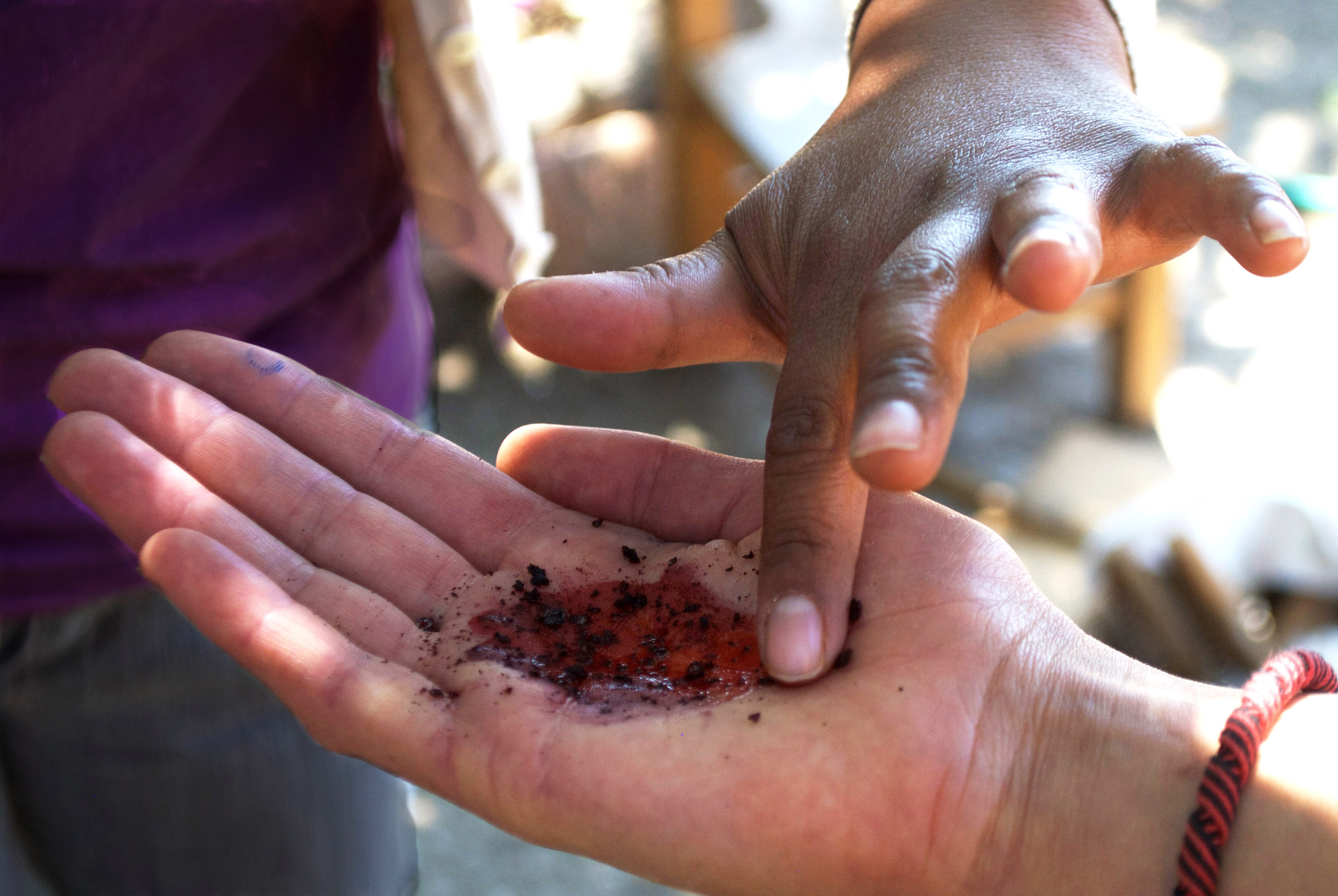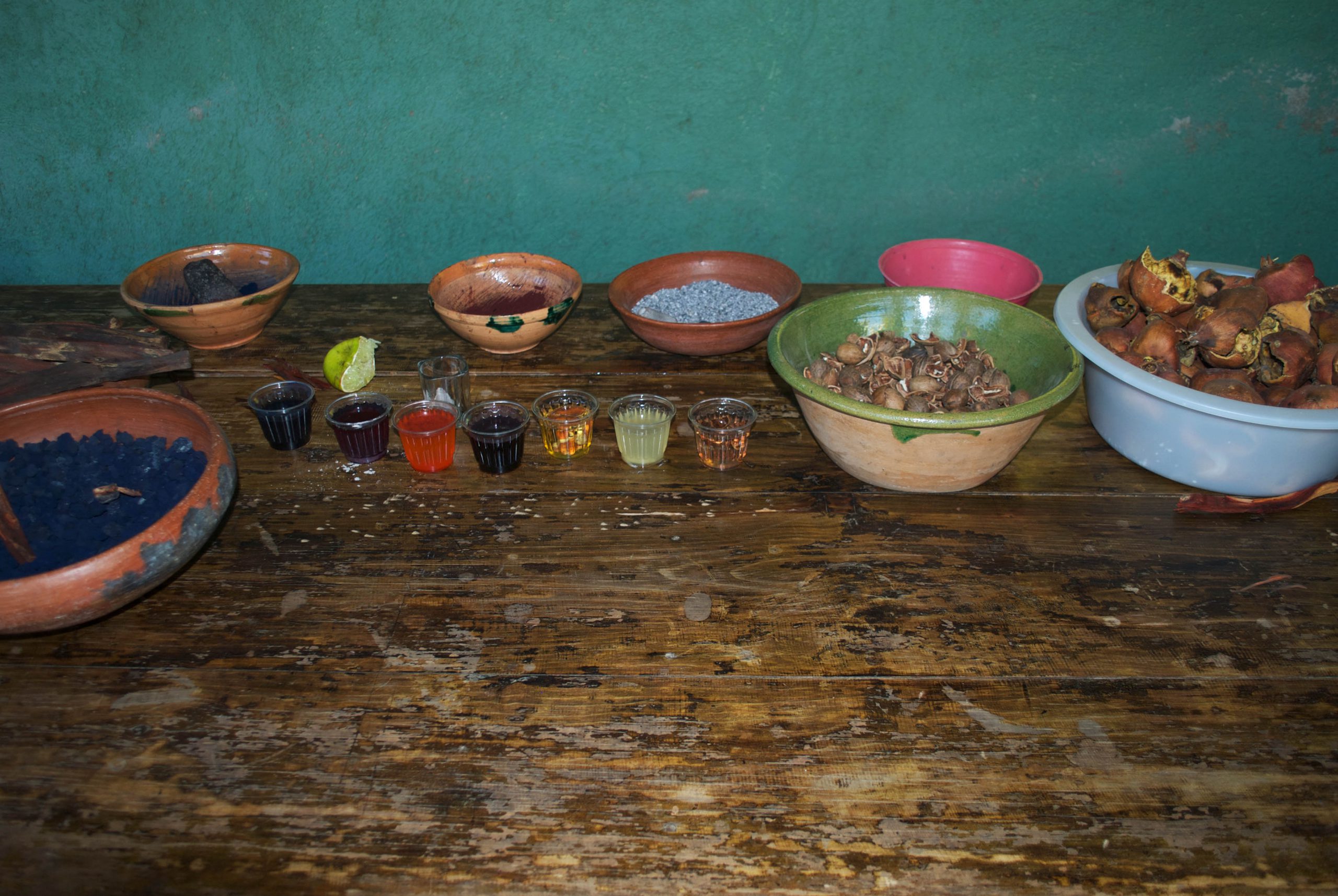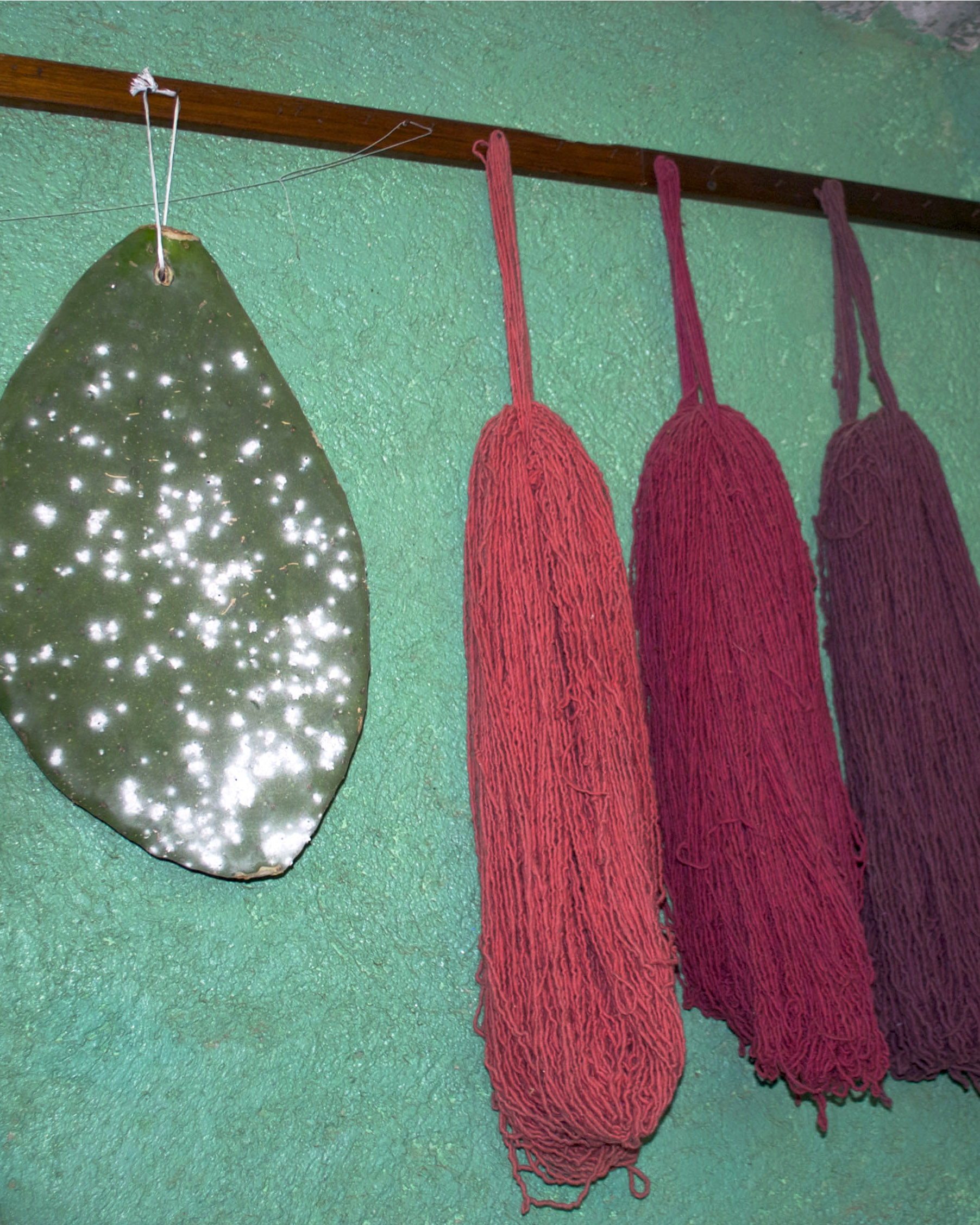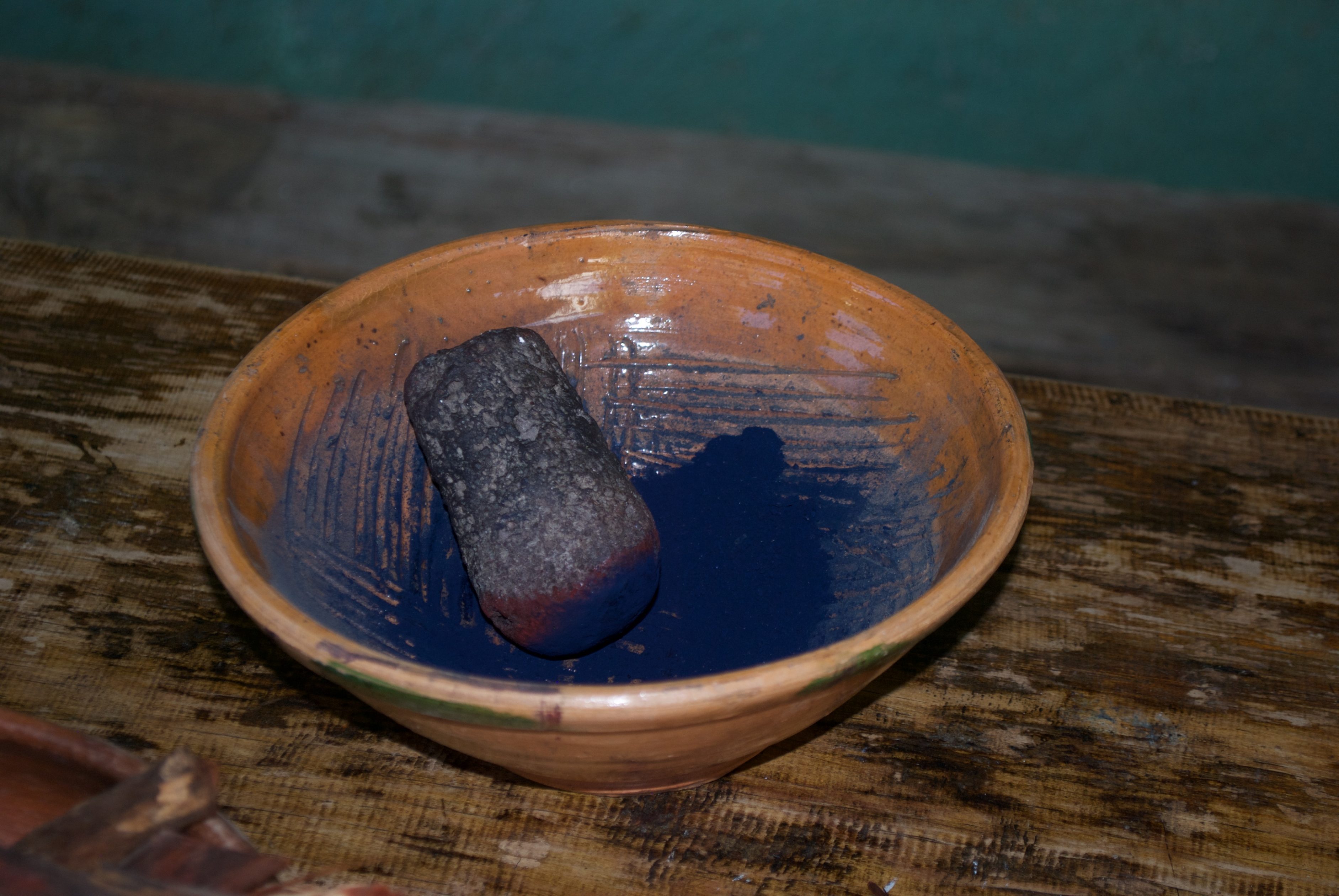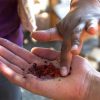With an abundant number of industry certifications and claims, a label like ‘100% natural colours’ sounds just as obvious as ‘healthy’ or ’organic’. But when it comes to textiles, natural colouring is a whole world apart.
Unless you are a very conscious buyer, probably all of your clothes, curtains, bedspreads and towels obtained their colours by coal tar and petroleum-based liquids. The process is cheap, consistent and scalable. But it also leaves its traces. In textile hubs in India and China, most natural water sources are polluted by the runoffs of the synthetic dyeing industry.
Natural dyeing is in many ways the opposite. It is time-consuming, labour intensive and therefore a highly expensive process. Colours are extracted by using natural resources that are abundant in the environment of origin. In the case of ‘our’ wool weavers in Teotitlan, Oaxaca, it means the artisans work with plants, nutshells, fruits like pomegranate and lime, wood bark, indigo and cochineal, a bug that lives in cactuses. Many of the materials can only be harvested once a year, like the Indigofera flower for the stunning blue tones.

